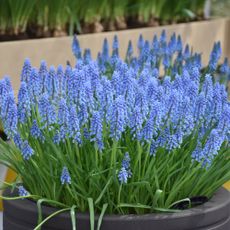Spinach Blue Mold Information – Treating Downy Mildew Of Spinach Plants

Spinach is likely one of the first crops you grow each year, as it can take a touch of frost. It is easy and quick to get to the table while temperatures are still chilly outside. Some get the crop growing in winter or at least planted by early spring. When you’re anticipating your first crop of the year and go to harvest your spinach, the discovery of downy mildew can be a disappointing setback. With a little scouting before harvest time, however, blue mold does not have to mean no spinach.
About Spinach with Blue Mold
Managing downy mildew, or blue mold, on spinach can be difficult, as wind-blown spores develop at 48 degrees F. (9 C.). Once downy mildew of spinach appears, it quickly infects the entire crop, with leaves showing damage in as little as four to five days. New strains of the disease have severely infected spinach crops the last few years. For instance, Arizona and California, which are top spinach producers in the U.S., are losing entire fields as downy mildew soars to the number one disease infecting this crop. Once you see the yellowing, patchy spots on stems and leaves of the young greens, and find them accompanied by white mildew, you still likely have time to plant another crop. If you grow spinach as a sale crop, you might not have that option.
Controlling Spinach Blue Mold
Treating unaffected plants and nearby soil with a fungicide can stop the spread of the fungus, Peronospora farinosa, by allowing growing leaves to sprout free of the pathogen. Spray a product with active ingredients like mefenoxam on spinach leaves that do not appear to have the mildew. Keep track of your findings and make the needed changes for your next spinach planting. Rotate the leafy green into a different growing spot yearly. Allow at least two years before you return the crop to the garden area where you first saw the downy mildew. Properly dispose of entire plants with grayish-purple rot or yellowing areas of mold. When plants begin to bolt from the heat or otherwise stop producing new greens, entirely remove old plants. Don’t put them in the compost pile. Good sanitation practices, such as cleaning up the remains of old plants, keep your beds fresh and free of pathogens that might otherwise remain in the soil. Purchase disease resistant seeds for your next planting to help avoid spinach with blue mold. Combine these practices of crop rotation and planting disease-resistant seeds in all your beds where you grow spring crops of spinach and other salad greens.
Gardening tips, videos, info and more delivered right to your inbox!
Sign up for the Gardening Know How newsletter today and receive a free copy of our e-book "How to Grow Delicious Tomatoes".

Becca Badgett was a regular contributor to Gardening Know How for ten years. Co-author of the book How to Grow an EMERGENCY Garden, Becca specializes in succulent and cactus gardening.
-
 Best Tomatoes For Containers: 10 Tastiest Varieties For Plentiful Produce In Compact Areas
Best Tomatoes For Containers: 10 Tastiest Varieties For Plentiful Produce In Compact AreasThese are the best tomatoes for containers that prove you don't need to have a large space or elaborate garden to grow delicious produce.
By Bonnie L. Grant
-
 Ultimate Potted Flowers For Spring: 8 Brilliant Blooming Options for Spring Containers
Ultimate Potted Flowers For Spring: 8 Brilliant Blooming Options for Spring ContainersCelebrate the most uplifting of seasons with the most dazzling container flowers imaginable. Here, we present some of the loveliest potted flowers for spring…
By Tonya Barnett